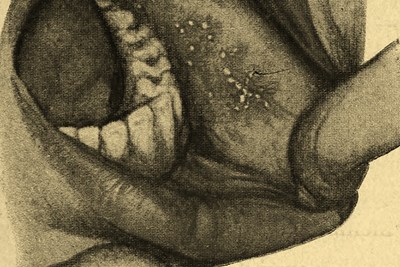Leprosy, also called Hansen’s disease (in honor of the first man to see the responsible microbe), is an infectious bacterial disease. Although it is quite rare in the United States, it remains a serious issue elsewhere, particularly in warm or tropical climates. The faster you get treatment, the less serious complications tend to be. Here’s a look at the signs and symptoms of leprosy.
Types of Leprosy
The two most common types of leprosy are tuberculoid and lepromatous. Both cause skin sores, but lepromatous is the more serious of the two, as large nodules also tend to develop. The type you develop seems to depend on how your immune system reacts to the presence of Mycobacterium leprae, the particular germ that causes Hansen’s disease. Approximately 95% of people (everywhere, not just in the U.S.) have a natural immunity the leprae bacteria.
A stronger immune system response leads to tuberculoid type; it is less contagious and less serious, often resulting in only the characteristic skin sores. Lepromatous type, however, develops in weaker immune systems, attacking the nerves, the skin, and the mucous membranes (like those found in the lining of your nose).
Spreading of Leprosy
Current research suggests leprosy spreads through moist droplets emitted from a cough or sneeze. Luckily, it isn’t highly contagious, the way something like staphylococcus aureus or the common cold tend to be. Generally, you contract Hansen’s disease when you’ve been around someone with leprosy for an extended period of time. In these instances, the person passing it usually doesn’t know they have it. It can take up to twenty years before the signs first appear. Luckily, treatment can limit the potential to pass the bacteria in as little as two weeks.
Signs of Leprosy
In any case, the most common time period for symptomatic development is between two and 10 years, although it can be less or longer. The earliest warning signs of leprosy are discolored spots on the skin that appear lighter, darker, or redder than their surroundings and fail to heal after several weeks; the most common locations for these early lesions include the arms, legs, and back. You may notice a loss of sensation in these areas, as well as hair loss. The American Leprosy Missions states that in some instances, a numb finger or toe may be your early warning sign.
Symptoms of Leprosy
As the disease progresses, the damage to the nerves and tissues becomes rapidly more extensive. The skin may become thick or dry, abnormal growths may develop, and sores may even evolve on the bottom of your feet. As the nerves come under attack, you may experience muscle weakness. The fingers may curl in as small muscles in the arms and hands become virtually paralyzed. Affected leg muscles can lead to numbness in the feet, which means any small cuts can become big, infected ulcers. Damaged nerves in the face can lead to blindness, and as the mucous membranes are attacked you may develop congestion or a bloody nose.
Ultimately, Hansen’s disease can be completely disabling, and even treatment can’t reverse all of the nerve and tissue damage. If you or someone you love is showing signs of Hansen’s disease, get to a doctor immediately. The National Hansen’s Disease Program has 11 federally funded clinics around the United States geared strictly at the management of leprosy.




